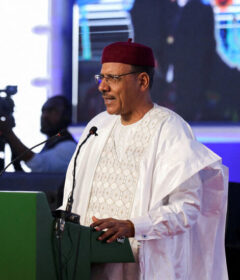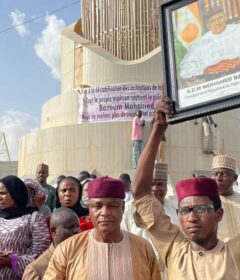Sudan Is Not Accustomed to Fighting in Its Capital
In a country long plagued by rebellions, coups and genocidal violence, the scenes of combat taking place in Sudan’s capital are notable because, until now, Sudan’s wars have unfolded on the geographic and political peripheries of the vast African nation.
For decades, Sudan’s military has waged brutal conflicts in the south, east and west of the country. That fighting led to the secession of South Sudan in 2011; an International Criminal Court determination that pro-government forces committed genocide in the western region of Darfur; the loss of land in a territorial dispute with neighboring Ethiopia; and monumental death, displacement and suffering.
Here is a look at some of the other conflicts Sudan’s army has fought in recent years:
South Sudanese civil war
A deadly struggle between secessionist fighters in the south and the government in Khartoum in the north consumed Sudan for decades, claiming more than two million lives. The two sides ultimately negotiated a peace agreement that split the country in 2011 after southerners voted in a referendum for South Sudan to become a new nation.
Within South Sudan, infighting in the government led to clashes in 2013 and ultimately triggered a violent feud between the two biggest ethnic groups. That conflict officially ended in 2018, but Africa’s newest country remains fragile, faced with a humanitarian crisis that has millions of people struggling for food.
Genocide in Darfur
Ethnically motivated violence in Darfur has killed as many as 300,000 people since 2003, according to an estimate from the United Nations, with Arab militia groups destroying and terrorizing villages inhabited mainly by ethnic African communities.
The atrocities, which began after ethnic minority rebels accused longtime President Omar Hassan al-Bashir of repression, led to his indictment by the I.C.C. for genocide. Mr. al-Bashir was ousted in a 2019 popular uprising that many Darfuris prayed would put an end to the violence. But the attacks against ethnic minorities in the region surged again last year, linked in part to upheaval in the central government.
One of main figures in Sudan’s current conflict, Lt. Gen. Mohamed Hamdan, was a former commander of the feared Janjaweed militia group that carried out some of the worst atrocities against civilians in Darfur. General Hamdan is now head of the Rapid Support Forces paramilitary group battling Sudan’s army.
Land dispute with Ethiopia
For over a century, Sudan and Ethiopia have been at odds over the lush border region of al-Fashaga, where farmers from both countries have shared land. The dispute intensified in late 2020 after fighting in the Tigray region of Ethiopia prompted Ethiopian soldiers presiding over al-Fashaga to leave. Sudanese troops then moved into capture parts of the contested territory, ousting Ethiopian farmers in the process, according to aid groups. There have been exchanges of shelling across the contested zone, with some deaths. The fighting has since subsided, but the core dispute remains unresolved.
Aid groups have warned that any escalation of the dispute could draw in neighboring countries, such as Egypt and Eritrea.
Nuba Mountains conflict
Clashes between government forces and rebel Nuba fighters in Sudan’s South Kordofan State broke out in the aftermath of South Sudan’s secession, with Nuba fighters supporting South Sudan.
Many Nuba civilians fled their villages and sought refuge in mountain caves, and aid organizations reported food shortages, civilian deaths from government airstrikes and the displacement of thousands of people. A cease-fire was announced in 2016, but Nuba people in the region have since reported being targeted by paramilitary groups loyal to the government in Khartoum.
Source: Read Full Article


